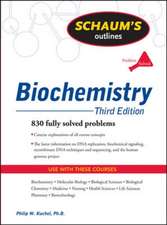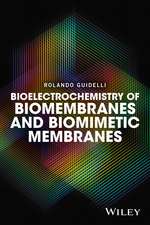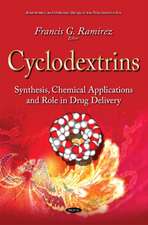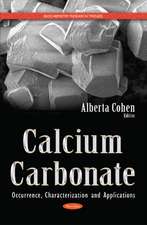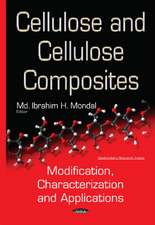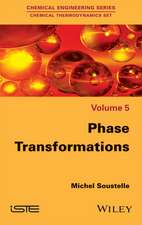Molecular Biology and Physiology of Water and Solute Transport
Editat de Stefan Hohmann, Søren Nielsenen Limba Engleză Paperback – 12 oct 2012
In July 2000 more than 200 researchers came together in Gothenburg, Sweden, for the `3rd International Conference on the Molecular Biology and Physiology of Water and Solute Transport" to discuss progress in this emerging research field. 58 different presentations from this conference are the basis for this book. Cumulatively, these 58 short chapters provide a balanced overview complementing numerous recent reviews in this field.
| Toate formatele și edițiile | Preț | Express |
|---|---|---|
| Paperback (1) | 957.94 lei 6-8 săpt. | |
| Springer Us – 12 oct 2012 | 957.94 lei 6-8 săpt. | |
| Hardback (1) | 965.52 lei 6-8 săpt. | |
| Springer Us – 30 ian 2001 | 965.52 lei 6-8 săpt. |
Preț: 957.94 lei
Preț vechi: 1168.21 lei
-18% Nou
Puncte Express: 1437
Preț estimativ în valută:
183.30€ • 191.01$ • 151.77£
183.30€ • 191.01$ • 151.77£
Carte tipărită la comandă
Livrare economică 03-17 aprilie
Preluare comenzi: 021 569.72.76
Specificații
ISBN-13: 9781461354390
ISBN-10: 1461354390
Pagini: 468
Ilustrații: XVI, 451 p.
Dimensiuni: 178 x 254 x 25 mm
Greutate: 0.8 kg
Ediția:2000
Editura: Springer Us
Colecția Springer
Locul publicării:New York, NY, United States
ISBN-10: 1461354390
Pagini: 468
Ilustrații: XVI, 451 p.
Dimensiuni: 178 x 254 x 25 mm
Greutate: 0.8 kg
Ediția:2000
Editura: Springer Us
Colecția Springer
Locul publicării:New York, NY, United States
Public țintă
ResearchDescriere
Biophysical studies in the 1950ies and 1960ies led to the realization that the water permeability of certain biological membranes must be due to the presence of water transporting proteins. This hypothesis was confirmed in 1991 and 1992 with the pioneering discovery of the first molecular membrane water channel, CHIP28, by Agre and coworkers. This integral membrane protein, which is abundant in the erythrocyte membrane and in many epithelial cells, is now called aquaporin-1 or AQP1. Thus the terms water channel or aquaporin are synonymous.
In July 2000 more than 200 researchers came together in Gothenburg, Sweden, for the `3rd International Conference on the Molecular Biology and Physiology of Water and Solute Transport" to discuss progress in this emerging research field. 58 different presentations from this conference are the basis for this book. Cumulatively, these 58 short chapters provide a balanced overview complementing numerous recent reviews in this field.
In July 2000 more than 200 researchers came together in Gothenburg, Sweden, for the `3rd International Conference on the Molecular Biology and Physiology of Water and Solute Transport" to discuss progress in this emerging research field. 58 different presentations from this conference are the basis for this book. Cumulatively, these 58 short chapters provide a balanced overview complementing numerous recent reviews in this field.
Cuprins
Structure Function Analysis of Aquaporins and Glycerol Facilitators. Functional Analysis of the Unusual Signature Motifs of the Yeast MIP Channel, Fpslp; R.M. Bill, et al. GLPF: A Structural Variant of the Aquaporin Tetramer; T. Braun, et al. Different Behaviours of MIP Proteins in N-Lauroylsarcosine; L. Duchesne, et al. Overexpression and Purification of the Glycerol Transport Facilitators, Fpslp and GlpF, in Saccharomyces Cerevisiae and Escherichia Coli; K. Hedfalk, et al. Three-Dimensional Fold of Human AQP1 Water Channel Determined by Electron Cryo-Crystallography of 2-Dimensional Crystals Embedded in Ice; A.K. Mitra, et al. Volume Flux Across Red Cell AQP1 and E. Coli AQPZ Water Channel Proteins Reconstituted into Planar Lipid Bilayers; S.M. Saparov, et al. Biogenesis and Folding of Aquaporin Water Channels in the Endoplasmic Reticulum; I. Turnbull, et al. Function, Physiological Roles and Regulation of Mammalian Aquaporins. The Kidney in the Inner Ear; E. Beitz, et al. Renal Aquaporin Expression in Aging Rat; S. Combet, et al. Expression and Regulation of Aquaporin-1 and Endothelial Nitric Oxide Synthase in Relationship with Water Permeability Across the Peritoneum; O. Devuyst, et al. Regulation of Renal Aquaporins and Sodium Transporters During Vasopressin-Escape in the Rat; C.A. Ecelbarger, et al. Aquaporin-8 and -9: Tissue Localization; M.-L. Elkjær, et al. Expression of the Epithelial Na+ Channel (ENAC) in Rat Kidney Colocalises with Aquaporin-2 (AWP-2); H. Hager, et al. Oxytocin: One of the Factors for Regulating AQP2 Localization and Urinary AQP2 Excretion; J.S. Han, et al. Fluid Transport by Human Nonpigmented Ciliary Epithelial Monolayer; Z. Han, R.V. Patil. Structural Features of Barrier Membranes; W.G. Hill, etal. Molecular Cloning of a New Aquaporin Superfamily in Mammals; K. Ishibashi, et al. Neurotransmitters Regulate the Amound of AQP5 in the Apical Plasma Membrane Via [Ca2+] In Parotid Acinar Cells; Y. Ishikawa, H. Ishida. Persistent Increase in the Amount of AQP5 in the Apical Plasma Membrane of Rat Parotid Acinar Cells Induced by the Muscarinic Receptor Agonist SNI-2011; Y. Ishikawa, H. Ishida. Cyclic AMP-Mediated Aquaporin-2 Translocation: Identification of Protein Kinase a Anchoring Proteins and the Role of the Small GTPases of the RHO Family; E. Klussmann, et al. Gastrointestinal Phenotype of Aquaporin Knockout Mice; T. Ma, A.S. Verkman. Two Distinct Signals Determine the Basolateral Targeting of AQP4 in the Renal Epithelial Cell Line MDCK; R. Madrid, et al. Water Channel Protein, Aquaporin 3, in Epithelial Cells; T. Matsuzaki, et al. Regulation of Aquaporin-2 Water Channel Trafficking by Phosphorylation: Lessons from Transfected Epithelial Cells; G. Procino, et al. Functional Expression of AQP3 in Human Epidermis and Keratinocyte Cell Cultures; R. Sougrat, et al. Identification of a New Form of AQP4 MRNA that is Developmentally Expressed in Brain; cS.M. Zelenin, et al. Models for Isotonic Transport Across Apical Membranes of Epithelial Cells; T. Zeuthen, et al. Pathophysiology. Missense Mutations in the MIP Gene, Encoding the Major Intrinsic Protein of the Lens (Aquaporin-0), Underlie Cataracts in Humans; P.J. Francis, et al. Urinary Excretion of Aquaporin-2 Water Channel is Dominant in Pathological State of Arginine Vasopressin-Induced Impaired Water Excretion; S.-E. Ishikawa, et al. Dysregulation of Renal Aquaporins and Sodium Transporters in Experimental Chronic and Acute Renal Failure in Rat; T.-H. Kwon, et al. Dysregulation of AQP2 in Bilateral and Unilateral Ureteral

